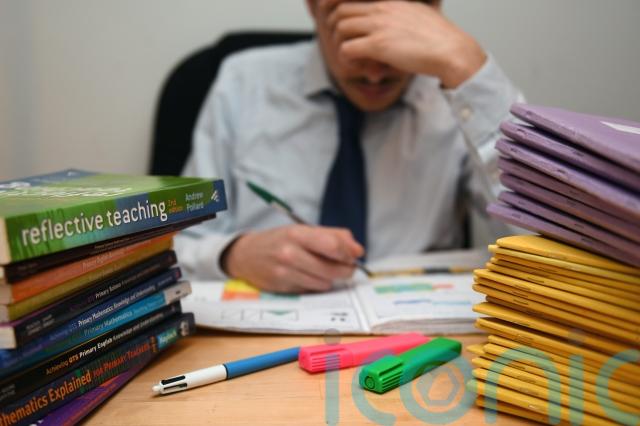
Education Secretary Jenny Gilruth has insisted the Scottish Government can cut the amount of time teachers spend in the classroom at the same time as delivering “better outcomes” for pupils.
She spoke ahead of announcing new proposals to cut class contact time for Scotland’s teachers – with the Scottish Government considering changes to their working week.
This could potentially see the introduction of a flexible four-day teaching week, giving teachers a dedicated day to carry out other parts of their job.

Ministers are also exploring a move to having new nationally agreed minimum standards on pupil learning hours, which could enable schools to adopt later start times, longer breaks, or restructured school days.
This reduction in class contact time for teachers, together with the pay deal agreed earlier in November and improved maternity leave, would form a new “National Deal” for Scotland’s teachers, according to the Scottish Government.
Ms Gilruth will set out more details on the proposals when she addresses the Association of Headteachers and Deputes in Scotland conference in Glasgow on Thursday.
It comes as members of the EIS trade union – Scotland’s largest teaching union – are balloting their members over possible strike action as part of a dispute over class contact time.
The EIS claims the Scottish Government has “delivered absolutely nothing”, despite the SNP election manifesto promising to reduce classroom time for teachers to a maximum of 21 hours a week.
The Statutory ballot over workload is now open, ballot papers will arrive in the post over the next few days #SU4QE ✉️
It's time to encourage voting! Tag us in photos of you posting your ballot, share our posts online and remind your colleagues to vote in the ballot📮✊🚨 pic.twitter.com/xVJb79RXaa
— EIS (@EISUnion) November 12, 2025
But speaking ahead of Thursday’s conference Ms Gilruth stressed, however, the government’s “clear commitment to supporting teachers and improving education in Scotland”.
Adding that Scotland has “the lowest pupil teacher ratio and the highest education spend per person of anywhere in the UK”, Ms Gilruth said she was making a “statement of intent to empower Scotland’s teachers with the time, trust and tools they need to deliver transformative learning”.
She added: “By investing in teacher capacity, the aim is to create richer learning experiences and raise standards for every learner.
“Working together, we can shape a future where reduced class contact time is not just a logistical change, but a catalyst for deeper professional engagement, improved wellbeing and better outcomes for every learner.”
EIS general secretary Andrea Bradley, however, criticised the Scottish Government for making “announcements via the media” rather than to the body which negotiates teachers’ pay and conditions.
Ms Bradley said: “Once the EIS has the opportunity to scrutinise the Scottish Government’s proposals, our salaries committee will discuss these and formulate a response.
“A red line for teachers remains that the 1.5 hour reduction in class contact must be allocated to teachers’ preparation of learning, teaching and assessment, and teachers treated as trusted professionals to use the time as they see fit in support of young people and their learning.
“There can be no government or employer diktat over how this time should be utilised by teachers.”
Subscribe or register today to discover more from DonegalLive.ie
Buy the e-paper of the Donegal Democrat, Donegal People's Press, Donegal Post and Inish Times here for instant access to Donegal's premier news titles.
Keep up with the latest news from Donegal with our daily newsletter featuring the most important stories of the day delivered to your inbox every evening at 5pm.